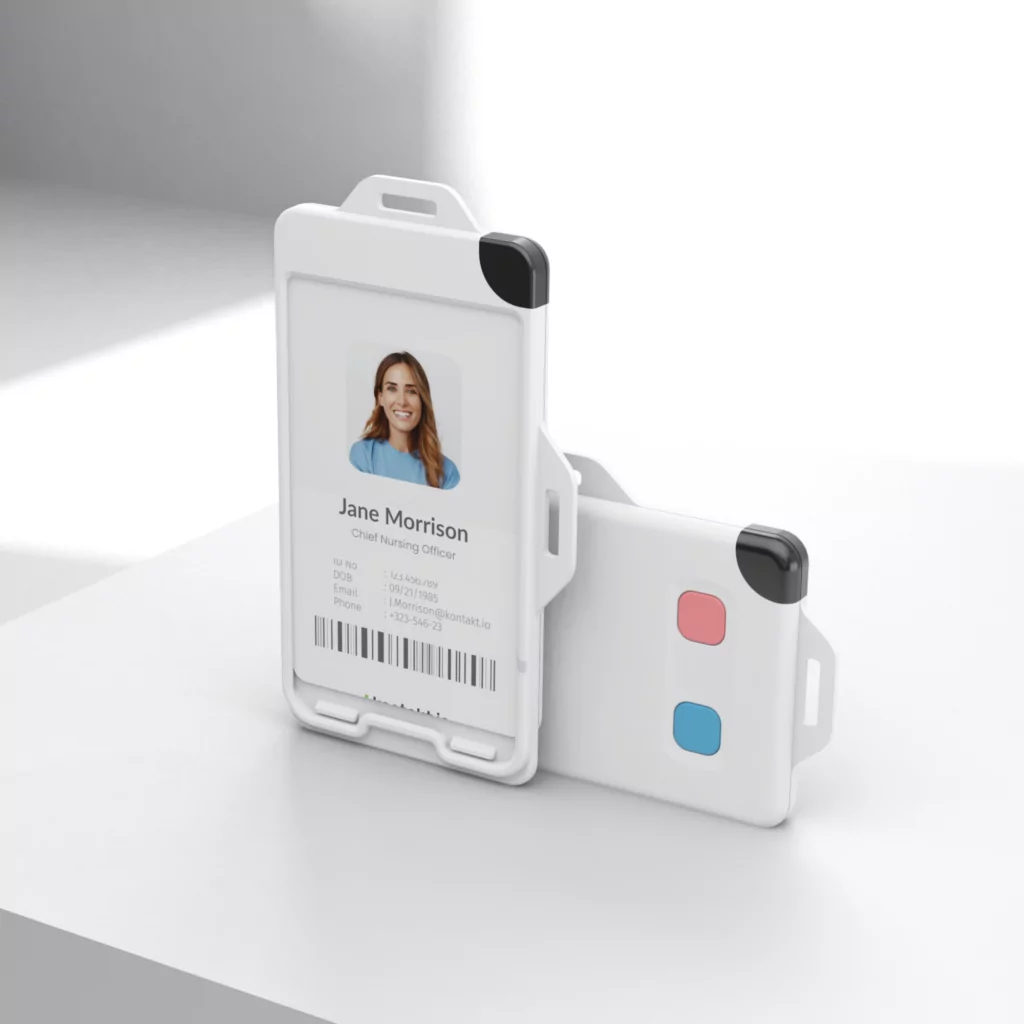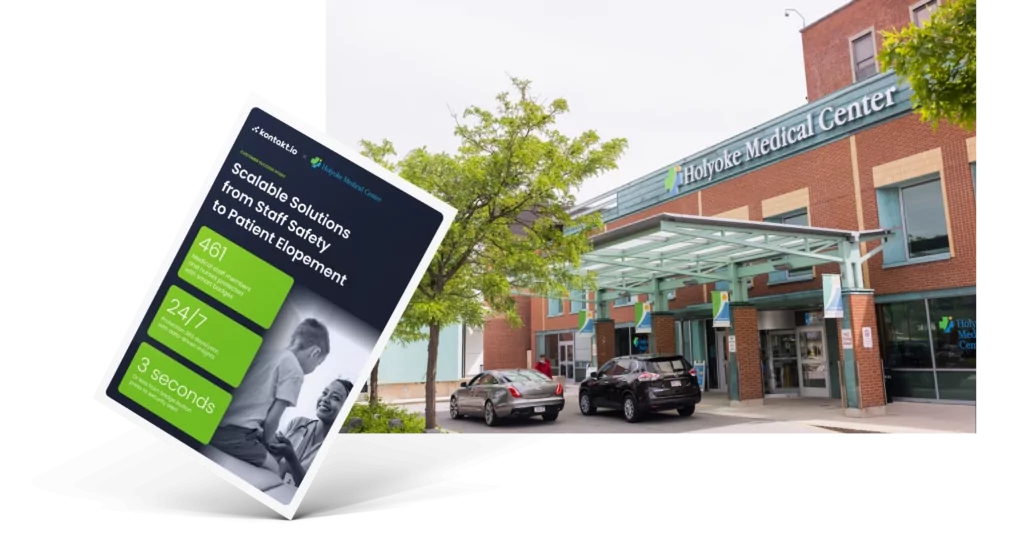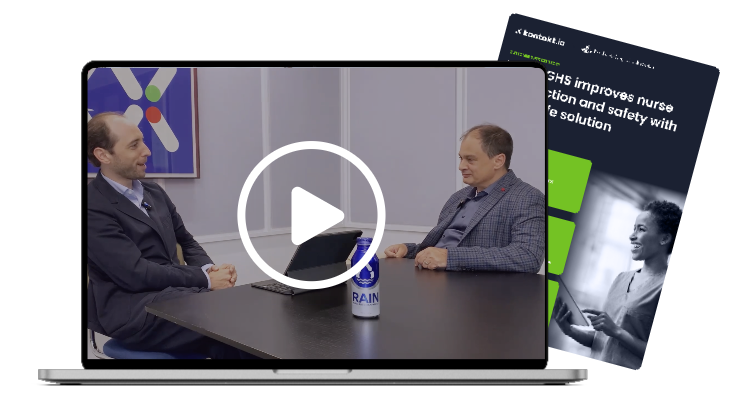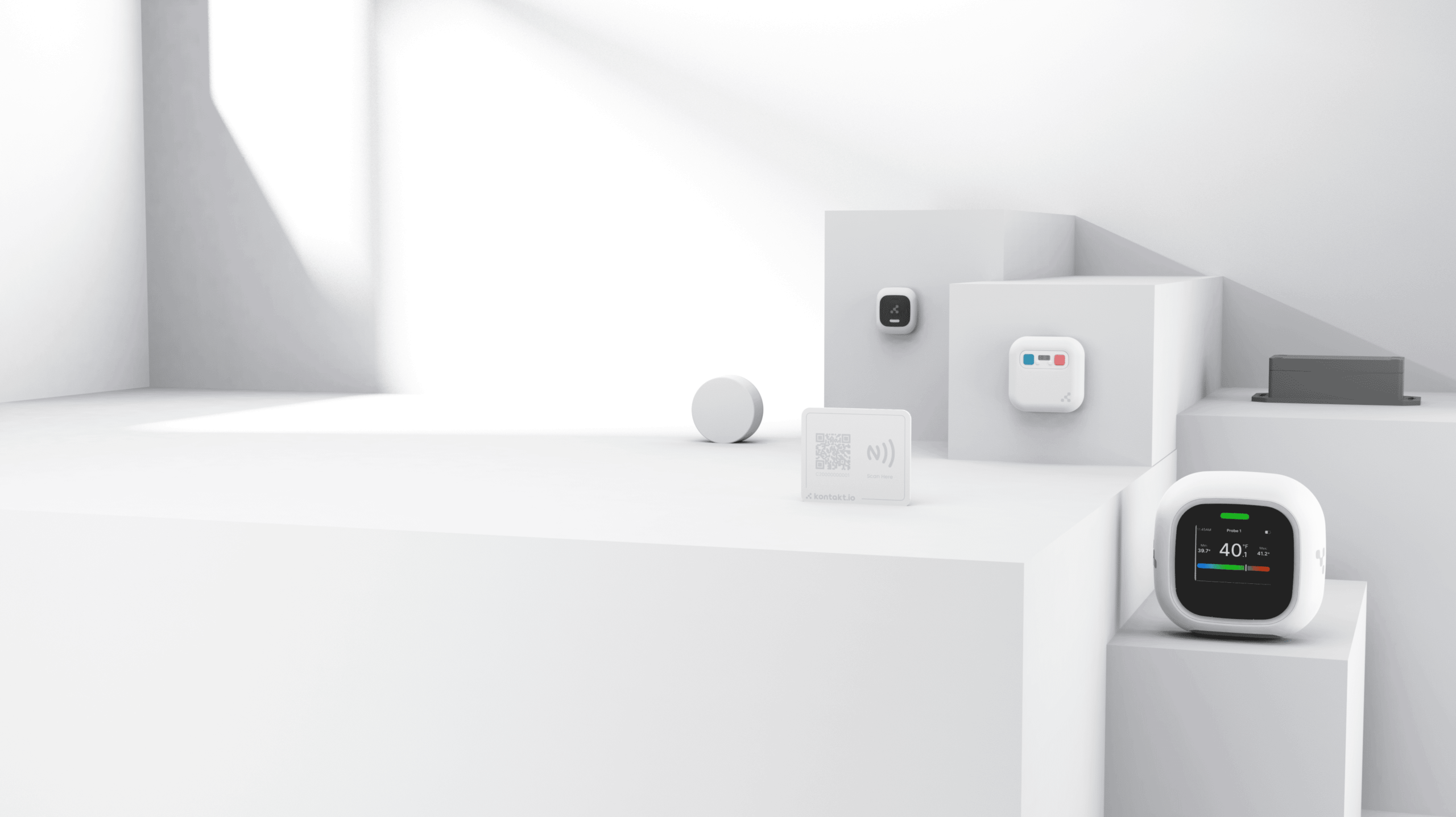Smart Badges and New Healthcare Staff Safety Technology
In today’s fast-paced, high-risk healthcare environments, hospital staff safety technology must move with the people it’s meant to protect. That’s why modern hospitals are turning to Bluetooth Low Energy (BLE)-enabled Smart Badges — wearable devices that empower staff to discreetly and instantly call for help.
These lightweight Smart Badges function as dual-purpose ID holders and mobile panic buttons, powered by healthcare RTLS (Real-Time Location Systems). With the press of a discreet button, staff can send an alert that shares their location in real-time. This allows security teams to quickly and precisely, reducing response time in scenarios when every second counts, particularly for nurse duress prevention.
“The very idea of putting a duress button in the nurse station is ridiculous because nurses don’t sit in front of a desk,” Rom Eizenberg, Chief Revenue Officer at Kontakt.io, told Business Insider.
RTLS-enabled Smart Badges are an ideal solution for mobile staff duress because they travel with the caregiver — and can immediately transmit the real-time location. This ensures that help is always one click away, making this nurse safety solution both proactive and preventative.
Protect Nurses. Prevent Violence. Improve Retention.
Preventing workplace violence in hospitals (WPV) isn’t just a matter of staff safety — it’s a critical financial and operational strategy. When nurses leave due to injury, fear, or burnout, the impact is enormous. Recruiting, onboarding, and lost productivity can account for $103,000 per nurse.
Consider how quickly this adds up at a typical 200-bed hospital. For instance, “Hospital ABC” experiences roughly 60 workplace violence incidents per year, contributing to an annual turnover rate of 22.5%. Approximately 30% of those departures are directly linked to safety concerns, meaning around 20 nurses leave each year due to preventable safety issues. That translates to roughly $2 million in preventable turnover costs annually.
For the price of a cup of coffee per nurse, per month, “Hospital ABC” could implement Kontakt.io’s Staff Safety solution and prevent incidents before they happen. When it comes to nurse duress, give caregivers peace of mind and resources at the click of a button.
Hospital Staff Safety Tech in 5 Steps
Deploying modern safety technology doesn’t need to be a years-long transformation. With the right roadmap, hospitals can make rapid, strategic progress toward comprehensive hospital staff safety. Here’s how to start:
- Stakeholders and End-Users
Define the scope — are you focused singularly on staff duress and hospital workplace violence or broader digital transformation goals like healthcare delivery operations optimization — and identify decision-makers and end-users across departments. - Infrastructure and Interoperability
Choose a communications standard like BLE and map out the required hardware with your technology partner to build a scalable RTLS healthcare infrastructure. Kontakt.io uses open APIs to ensure seamless systems integrations for mobile panic buttons and more. - Scalability and Expansion
Avoid vendor lock-in. The ability to scale or pivot use cases is essential as technology and needs evolve. With Kontakt.io’s platform solution, customers have access to dozens of use cases from hospital Staff Safety to Asset Management to Patient Flow and more. - Go Live Quickly and Easily
Begin with a small-scale deployment or roll out across your entire health system. With Kontakt.io, implementation of a state-of-the-art mobile staff duress solution is fast, easy, and scalable.
- Monitor, Measure, Optimize
Use analytics and incident data to continuously improve safety protocols, nurse safety training, and response strategies.
What Healthcare Leaders Are Saying about Smart Badges and Staff Safety
As the technology partner with hospitals like Holyoke Medical Center in Massachusetts and healthcare systems like Northeast Georgia (NGHS), Kontakt.io protects tens of thousands of nurses, staff, and clinicians all across the country.
“Kontakt.io elopement badges have allowed us the ability to ensure our high risk patients were safe. The badge alerts the staff so we can ensure the patient is safely returned to their treatment space quickly. In addition, the staff duress badges bring staff a sense of security. Having a solution that is on your person allows you to push for help discreetly and to ensure help is on the way.”
— Lynn Garreffi, Director of Emergency Services, Holyoke Medical Center
“The system allows for accurate reporting of staff and patient location, ensuring help is sent to the right area. Kontakt.io’s easy roll out ensured we could get the system into the hands of our staff quickly. Their support team has been excellent in helping us integrate the system into our network and workflows. We are exploring options to leverage this existing system into our use cases like equipment tracking.”
— Keith Pratt, Director of Information Systems, Holyoke Medical Center
“Innovation and technology and digital adoption is a differentiator in our market. We believe that we can impact the lives of our patients, families, our clinicians, and our providers in a distinct way.”
– Chris Paravate, Executive VP and CIO at NGHS
These are live, real-world examples of the impact when hospitals invest in the safety and wellbeing of their staff. How can we make nurses feel more protected? Deploying nurse duress prevention tools like smart badges is the first step in a comprehensive, holistic approach to hospital staff safety.
Nurse safety is more than just a policy — it’s a platform decision. And with BLE-enabled Smart Badges, safety becomes an always-on capability, not an afterthought.
Healthcare delivery begins with our caregivers. Talk to the experts at Kontakt.io about how to bring RTLS-enabled mobile staff duress and safety to your healthcare system.





